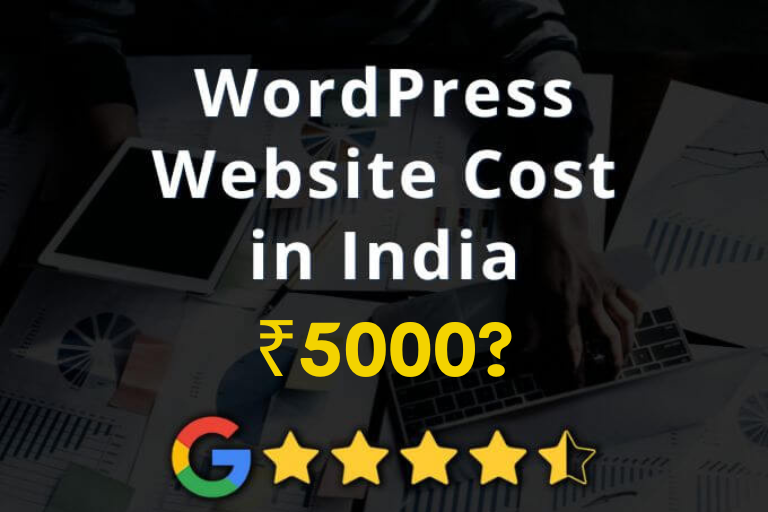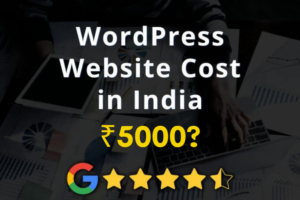Are you considering creating an online store, but you’re unsure about the price to launch an online store in 2024? You’ve arrived at the appropriate page. To find out the cost of developing an e-commerce website in 2024, you must read this blog.
The amount of time spent on the website every day has increased significantly as practically all distant areas now have access to the internet.
It is essential to comprehend the variables affecting website development expenses in order to make wise choices. We’ll work our way through the complexities of website prices in this tutorial, covering everything from all kinds of website to hidden charges and budgeting advice.
As the e-commerce landscape continues to evolve, many businesses in India are looking to establish or enhance their online presence. Understanding the costs associated with e-commerce website development is crucial for making informed decisions. This blog explores the factors influencing costs, average price ranges, and what to expect in 2024 and 2025.
Cost Breakdown of Ecommerce Website Development
The cost of developing an e-commerce website in India can vary significantly based on several key factors:
- Platform Choice: The choice of e-commerce platform can impact your overall costs. Popular options include:
- Shopify: Great for small to medium businesses, with costs ranging from ₹29/month to ₹299/month, plus additional transaction fees.
- WooCommerce: A plugin for WordPress, it can be more cost-effective but may require additional costs for hosting, themes, and plugins, ranging from ₹10,000 to ₹50,000 or more for a fully functional site.
- Magento: Ideal for larger enterprises, with development costs starting from ₹1 lakh and going up significantly based on complexity.
- Design Complexity: Custom designs and user interfaces increase costs. Basic templates can cost around ₹15,000 to ₹30,000, while custom designs can range from ₹50,000 to ₹2 lakhs, depending on requirements.
- Custom Features: Additional features such as advanced payment gateways, inventory management systems, and personalized customer experiences can increase development costs. Each feature may add ₹10,000 to ₹50,000 to the total cost.
- Hosting and Security: Reliable hosting is essential for e-commerce sites, with costs ranging from ₹3,000 to ₹10,000 per year. Security features like SSL certificates can add ₹5,000 to ₹15,000.
Different Pricing Models
When choosing a development partner, consider the pricing models:
- Freelancers: Typically offer lower rates, ranging from ₹500 to ₹2,500 per hour, depending on their expertise. They may be suitable for small projects with limited budgets but can lack the resources of a larger agency.
- Agencies: While more expensive, agencies often provide comprehensive services, including design, development, and ongoing support. Costs for agencies can range from ₹50,000 to ₹5 lakhs, depending on the project scope.
Average Costs for 2024 and 2025
- Small Businesses: For a basic e-commerce website, costs typically range from ₹30,000 to ₹1 lakh.
- Mid-Sized Companies: For more complex sites with custom features, costs may range from ₹1 lakh to ₹3 lakhs.
- Large Enterprises: For extensive, fully customized e-commerce platforms, costs can exceed ₹5 lakhs, often reaching ₹10 lakhs or more depending on the requirements.
Comparison with Other Countries
India remains a competitive market for e-commerce development. For instance, e-commerce website development costs in countries like the USA or UK can range from $5,000 to $50,000 for similar services, highlighting India’s affordability and high-quality service offerings.
Additional Ongoing Costs
It’s important to factor in ongoing costs beyond the initial development:
- Maintenance and Updates: Regular updates and maintenance can cost ₹10,000 to ₹30,000 per year.
- SEO and Digital Marketing: To drive traffic and sales, budgeting for SEO and marketing is crucial, typically ranging from ₹15,000 to ₹1 lakh per month based on strategies used.
Future Trends Affecting Pricing
In 2024 and 2025, certain trends may impact e-commerce development costs:
- AI Integration: AI-driven features such as personalized recommendations may require additional investment but can significantly enhance user experience.
- Mobile-First Designs: With increasing mobile shopping, responsive and mobile-optimized designs will be essential, potentially adding to development costs.
- Headless Commerce: This architecture allows for more flexibility and personalization, which may lead to higher upfront costs but better long-term performance.
Case Study
For example, a local clothing brand recently spent ₹1.5 lakhs on an e-commerce website developed on WooCommerce. The project included a custom design, integration of multiple payment gateways, and a robust inventory management system. The brand reported a 30% increase in online sales within six months, demonstrating the value of investing in quality development.
Value for Money
Investing in a high-quality e-commerce website is essential for long-term success, especially as India’s online marketplace continues to grow. A well-designed site can enhance customer experience, improve conversion rates, and ultimately lead to higher sales.
Conclusion
In summary, the cost of e-commerce website development in India for 2024 and 2025 can vary widely based on several factors, including platform choice, design complexity, and additional features. Businesses should carefully assess their needs, budget accordingly, and choose the right development partner to ensure a successful online presence.





